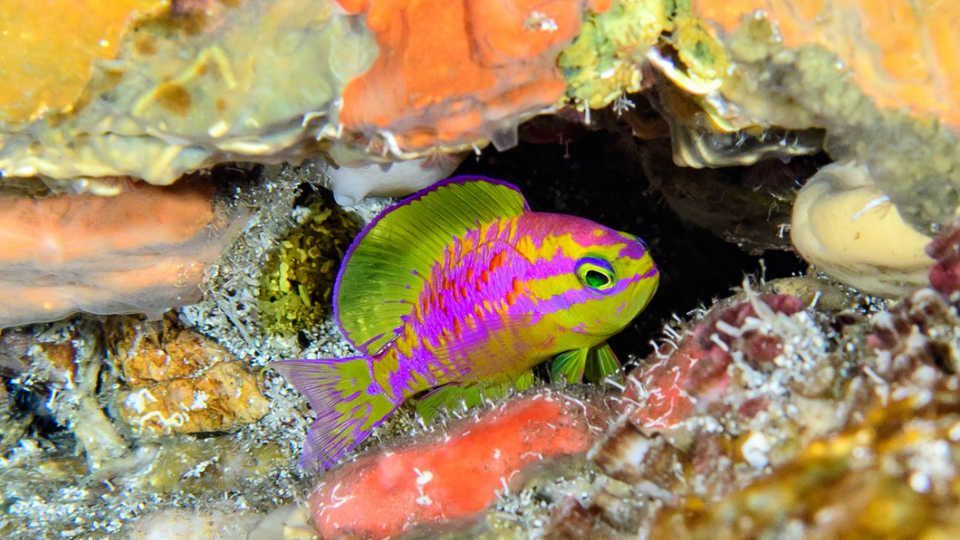Newly Discovered Neon Fish Species Is Named After Greek Goddess of Love
Researchers were so entranced by the pink and yellow fish that they failed to spot a sixgill shark swimming just above their heads
/https://tf-cmsv2-smithsonianmag-media.s3.amazonaws.com/filer/7f/38/7f388d81-17b6-4c3d-9842-1ca5909176c9/aphrodite.jpg)
A new species of neon fish discovered in the ocean’s twilight zone—a foreboding region of darkness found 200 to 500 feet below the water’s sunlit surface—has entranced scientists to such an extent that they’ve dubbed it Tosanoides aphrodite in honor of the Greek goddess of love and beauty.
Researchers from the California Academy of Sciences spotted the bright pink and yellow fish while diving in the Atlantic some 600 miles off the coast of Brazil, Katherine Hignett reports for Newsweek. The team’s findings, newly published in ZooKeys, represent an exciting expansion of the Tosanoides genus, which has previously been limited to the Pacific, and add an unexpected splash of color to a normally subdued environment.
“Fishes from the twilight zone tend to be pink or reddish in color,” study co-author Hudson Pinheiro, an ichthyologist (or fish expert) at the California Academy of Sciences, said in a statement. “Red light doesn’t penetrate to these dark depths, rendering the fishes invisible unless illuminated by a light like the one we carry while diving.”
According to National Geographic’s Michael Greshko, Pinheiro and his colleague Luiz Rocha, also an ichthyologist, were exploring a coral reef located roughly 400 feet below the Saint Paul’s Rocks archipelago when they caught a glimpse of the fish’s flashy hues. Mystified by the out-of-place neon colors, the pair decided to take a closer look. As a sixgill shark swam unnoticed above their heads, rendered mundane by the enticing new find, the scientists found themselves face-to-face with a three-inch T. aphrodite.
By the end of the summer 2017 dive, Pinheiro and Rocha had amassed a collection of three adult males, two adult females and two juvenile females. As Helen Thompson writes for Science News, DNA and observational analysis conducted with the help of colleague Claudia Rocha revealed an array of unique characteristics, including a long spine and an extra fin ray.

Based on these lab tests, the scientists identified the fish as a member of the Tosanoides genus. T. aphrodite is the fourth species to join the genus’ elusive ranks, and it’s the only one of its kind ever discovered in the Atlantic. The other three species—including Tosanoides obama, a Hawaiian fish named after former U.S. President Barack Obama—all reside in the Pacific.
Newsweek’s Hignett notes that T. aphrodite males boast more dramatic technicolor tones than their female counterparts, which are a solid red-orange color closer to that typically seen in the twilight zone. It’s unclear why the species developed such unusual hues, but as Luiz Rocha explains, the researchers are actively pursuing an explanation.
“The prevailing hypothesis is that they use these colors as camouflage since there is no red or blue light there, but male and female are so different that they must be using it for something else,” Rocha tells Newsweek. "We are sequencing their vision genes in our lab to try to understand this better.”
/https://tf-cmsv2-smithsonianmag-media.s3.amazonaws.com/accounts/headshot/mellon.png)
/https://tf-cmsv2-smithsonianmag-media.s3.amazonaws.com/accounts/headshot/mellon.png)